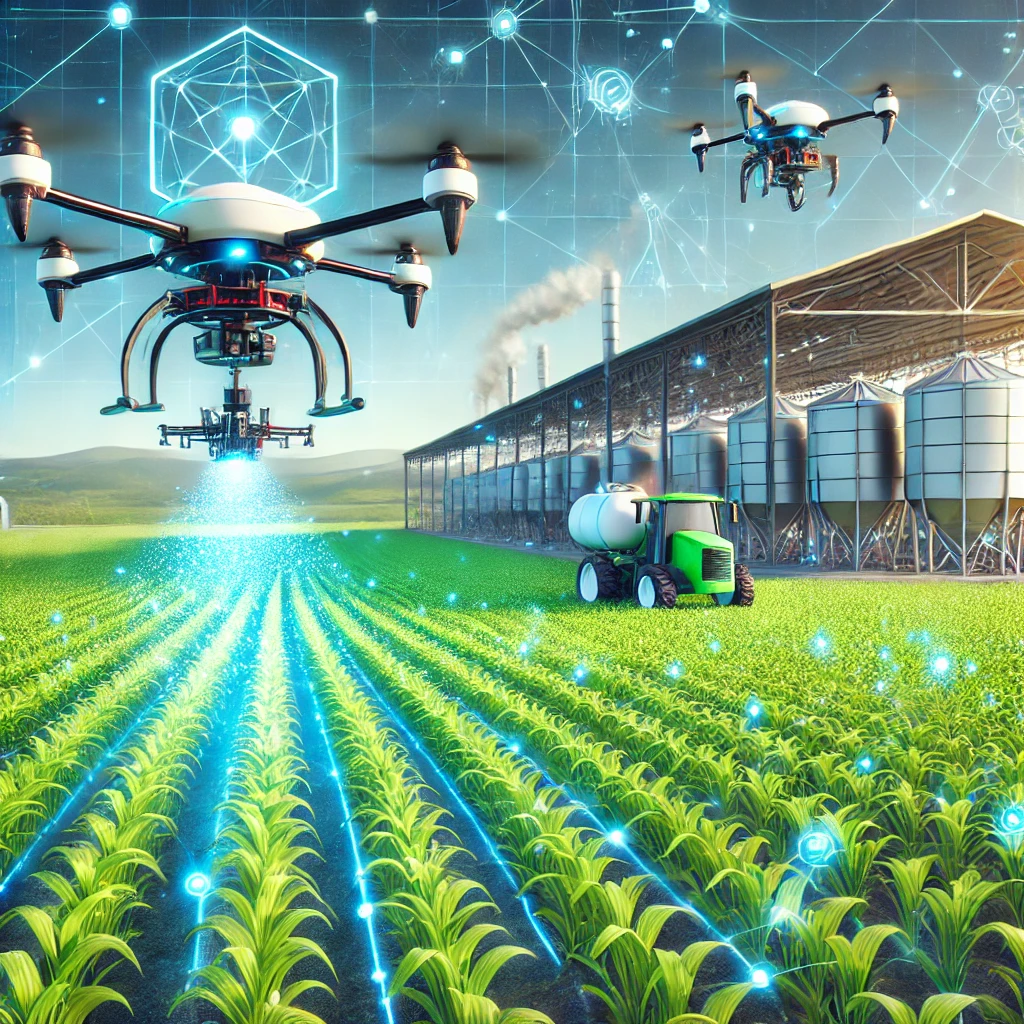Table of Contents
Introduction
In recent years, the agricultural industry has undergone a massive transformation, thanks to technological advancements. One of the most game-changing innovations is drone technology, which is revolutionizing farming practices. Drones are helping farmers increase crop yields, reduce costs, and improve sustainability through precision agriculture techniques.
With the global population expected to reach 9.7 billion by 2050, there is immense pressure on farmers to produce more food while using fewer resources. Drones provide an efficient way to achieve this goal by offering real-time insights, automated processes, and data-driven decision-making. But how exactly do they work in precision agriculture? Let’s dive in.

What is Precision Agriculture?
Precision agriculture, also known as smart farming, is a farming approach that uses technology, data analytics, and automation to optimize crop production. The goal is to make farming more efficient by using precise amounts of water, fertilizers, and pesticides, reducing waste and increasing productivity.
Key Components of Precision Agriculture
- Remote sensing: Collecting data using satellites, drones, and sensors.
- Variable rate technology (VRT): Adjusting inputs (fertilizers, pesticides) based on field data.
- Automated machinery: Using robotics and AI-powered tools for planting, harvesting, and monitoring.
- Data analytics: Using software and AI to analyze trends and make informed decisions.
With drones playing a crucial role in precision agriculture, let’s explore how they enhance farming efficiency.
How Drones Improve Agricultural Efficiency
Drones, also called Unmanned Aerial Vehicles (UAVs), are equipped with advanced cameras, sensors, and GPS systems that help farmers monitor and manage their crops with unparalleled accuracy.
Types of Drones Used in Agriculture
- Fixed-wing drones: Long-range monitoring and mapping.
- Rotary-wing drones (multicopters): Precise, close-range observations.
- Hybrid drones: Combination of both, offering flexibility and efficiency.
Drone Sensors and Their Functions
| Sensor Type | Function |
| RGB Cameras | Basic imaging and crop monitoring |
| Multispectral Sensors | Vegetation health analysis |
| Thermal Sensors | Irrigation and water stress detection |
| LiDAR (Light Detection and Ranging) | 3D mapping and terrain analysis |
Drones help farmers make data-driven decisions, ensuring maximum yield with minimal resource waste.
Key Applications of Drones in Precision Agriculture
1. Crop Monitoring and Health Assessment
Drones provide high-resolution aerial imagery, allowing farmers to detect plant stress, diseases, and pest infestations before they become widespread.
2. Soil and Field Analysis
Using multispectral and LiDAR sensors, drones create detailed soil maps, helping farmers optimize fertilizer and irrigation schedules.
3. Precision Spraying of Pesticides and Fertilizers
Drones equipped with spraying systems can apply pesticides and fertilizers only where needed, reducing chemical usage and preventing environmental contamination.
4. Livestock Monitoring
Farmers use drones to track livestock, detect injuries, and monitor grazing patterns, improving animal welfare and farm productivity.
Benefits of Using Drones for Precision Farming
✔ Increased Efficiency – Faster and more accurate data collection than manual scouting. ✔ Cost Savings – Reduced expenses on fertilizers, pesticides, and labor. ✔ Environmental Benefits – Minimized chemical runoff and better resource management. ✔ Higher Yields – Timely interventions lead to healthier crops and increased productivity. ✔ Scalability – Suitable for both small farms and large-scale agricultural operations.
Challenges and Limitations
Despite their advantages, drones in agriculture face several challenges:
- Regulatory Issues: Many countries have strict drone regulations, requiring permits and training.
- High Initial Costs: Advanced agricultural drones can be expensive.
- Data Management Complexity: Farmers need specialized software and skills to analyze drone data.
- Weather Dependence: Drones cannot operate in extreme weather conditions.
Future of Drones in Agriculture
The future of drone technology in agriculture looks promising, with innovations such as:
🚀 AI-Powered Drones – Autonomous drones capable of analyzing and making decisions in real time. 🌾 Swarm Technology – Multiple drones working together to cover large areas quickly. 📡 5G Connectivity – Faster data transmission for real-time monitoring.
With continuous advancements, drones will become an indispensable tool for farmers worldwide.
Conclusion
Drones are transforming precision agriculture by making farming more efficient, sustainable, and profitable. From monitoring crops and analyzing soil to spraying fertilizers and managing livestock, drones are helping farmers maximize yields while reducing costs and environmental impact.
If you’re a farmer looking to improve productivity, investing in drone technology might be the next step toward smart farming success.


